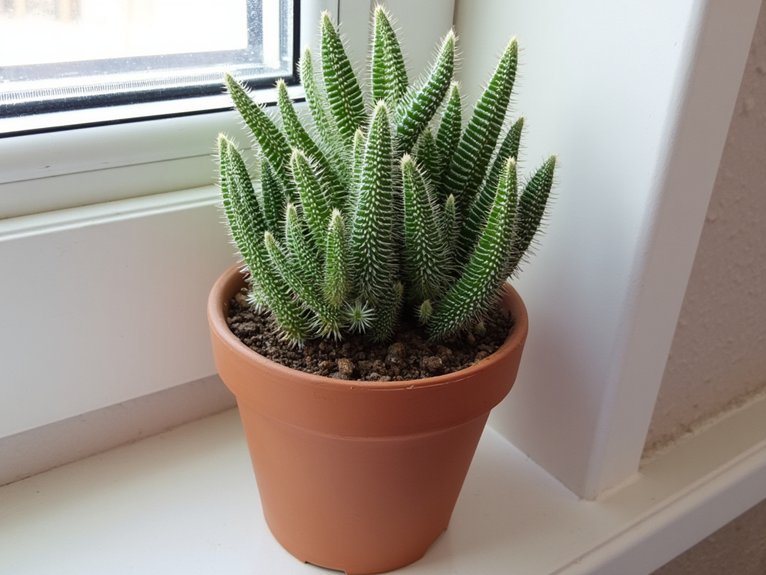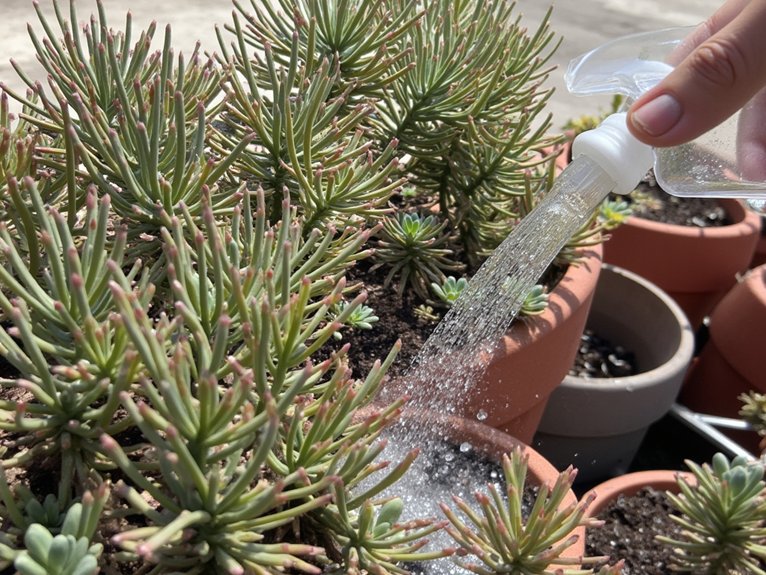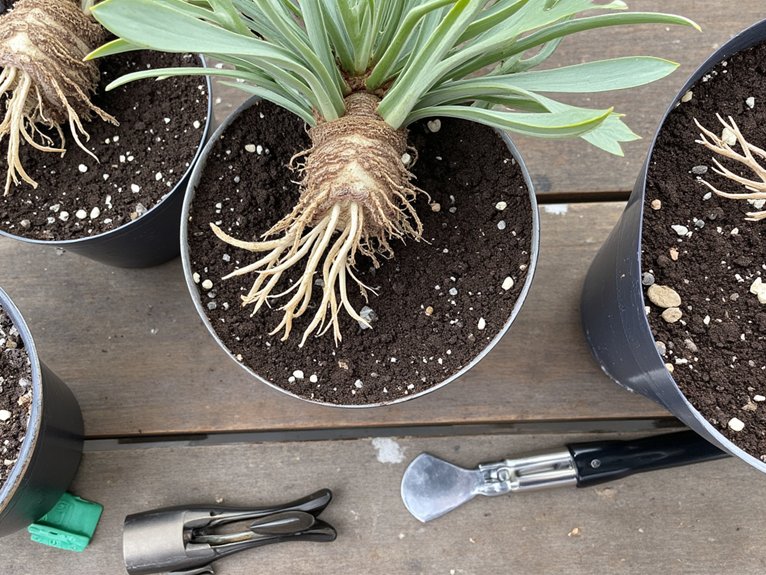While many plant enthusiasts worry that exotic succulents require complex care, you’ll find the Zebra Haworthia surprisingly manageable with the right approach. As botanist Dr. Sarah Chen notes, “These resilient plants thrive when given basic essentials: proper light, well-draining soil, and consistent but minimal care.” Your success with this striking succulent depends on understanding five critical care elements, which can transform any novice gardener into a confident Haworthia cultivator.
Contents
Essential Growing Conditions for Zebra Haworthia Success

When it comes to growing a healthy Zebra Haworthia, creating the right environment is essential for this South African succulent’s success. You’ll need to provide at least six hours of bright, indirect sunlight daily, ideally near a south-facing window. These hardy plants thrive in temperature ranges between 40-85°F, making them perfect houseplants.
“The key to success with Zebra Haworthia lies in replicating their natural habitat conditions,” says botanist Dr. Sarah Chen. “They prefer dry air and well-draining soil.” For ideal growth, maintain temperatures above 40°F and protect your plant from frost by bringing it indoors during cold snaps.
Soil and Container Requirements for Optimal Growth
Although Zebra Haworthias can survive in various containers, they’ll thrive best in pots with proper drainage and the right soil mix. Select a container that’s 4-6 inches deep with multiple drainage holes at the bottom to prevent root rot.
For ideal soil composition, combine:
- 50% regular potting soil
- 25% coarse sand
- 25% perlite or pumice
You’ll want to make sure your pot isn’t oversized – choose one that’s just 1-2 inches wider than your plant’s root system. “The key to success is a well-draining mix in a right-sized container,” notes succulent expert Sarah Chen.
Water and Climate Management Tips

Since proper watering is essential for Zebra Haworthia survival, you’ll need to master the right balance of moisture and dryness. Check the soil’s top inch before watering – it should feel completely dry. During growing season, water every 2-3 weeks, reducing frequency in winter.
Your plant’s climate adaptation depends on maintaining temperatures above 40°F. Keep your Haworthia in a spot with bright, indirect light and moderate airflow. If you’re growing outdoors, bring containers inside when temperatures drop below 40°F.
Watch for signs of overwatering like soft, mushy leaves. Remember: it’s better to underwater than overwater these drought-tolerant succulents.
Preventing and Treating Common Plant Problems
Despite their hardy nature, Zebra Haworthias can face several common problems that’ll need your attention. Watch for signs of overwatering, like soft, mushy leaves, and adjust your watering schedule immediately. For pest management, inspect your plant weekly for spider mites and mealybugs, treating any infestations with insecticidal soap.
You’ll want to address leaf discoloration promptly. Brown spots often indicate sunburn – move your plant to filtered light. Yellow leaves typically mean you’re overwatering or the soil isn’t draining well. If you notice root rot, cut away affected areas and repot in fresh, well-draining soil.
Propagation and Maintenance Techniques

Three reliable methods exist for propagating your Zebra Haworthia: offsets, leaf cuttings, and division. The easiest method is offset propagation, where you’ll separate the baby plants that grow around the mother plant’s base. Simply remove the offset with clean shears, let it callous for 24 hours, then plant in well-draining soil.
For leaf cutting propagation, select a healthy leaf and cut it at the base. Allow the cut end to dry for two days before placing it in succulent mix. Water sparingly until roots develop. Division works best with mature, clustered plants by carefully separating the root ball into sections.
